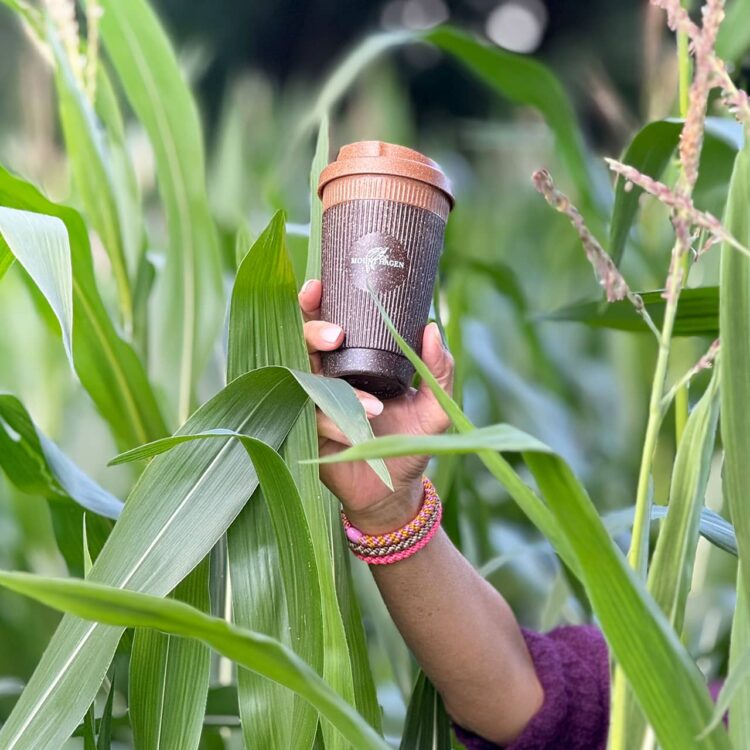-
Inexperienced Life-style
What precisely is reusing, recycling, and upcycling?
I just lately learn an article by Jutta Nachtwey within the “Authentic Magazin”*, with whom we already had a really inspiring “Espresso with…”**: How a discarded wind turbine turns into a designer tiny home – a particular form of recycling or liveable fort within the air***. Purpose sufficient for me to ask:

Babette Lichtenford
What precisely is the distinction between reusing, recycling, and upcycling?
In fact, right here at Mount Hagen, we regularly speak about useful resource conservation and sustainability (even when that may be a hackneyed time period). However – let’s be trustworthy – off the highest of my head, I couldn’t fairly clarify the distinction between the assorted recycling methods. However we’re going to alter that now.
The basic instance of the reuse idea: The reusable bottle.
Reusing means reusing one thing in nearly the identical or the same operate. With out intensive modifications or processing. The reusable glass deposit bottle is subsequently the basic instance of this idea.
Nevertheless it additionally applies to furnishings, clothes, books, and typically even electrical home equipment. Consider secondhand shops or one thing like Stilbruch**** in Hamburg, Germany, the secondhand division retailer run by the waste assortment service. The advantage of reusing is that it extends the lifetime of the product and thus reduces useful resource consumption, because it doesn’t need to be manufactured once more. However: In fact, this solely works so long as the product is useful. After which?
Recycling: Materials restoration.
Recycling makes an attempt to return the supplies of a product again into the manufacturing cycle. Paper is changed into recycled paper, glass is melted down and changed into new glass merchandise. Metals, for instance, will be recycled indefinitely.
Sadly, it’s far more sophisticated with plastic, because the several types of plastic are blended collectively and can’t be separated by kind. It isn’t troublesome to think about that such recycling processes usually contain a substantial amount of power consumption and are normally related to a lack of high quality. On this respect, it isn’t a closed-loop system, however quite downcycling: The fabric is reused, however not indefinitely. And the extent of reuse is decrease than that of the unique product. The counter-concept to that is…
Upcycling, including worth by way of artistic redesign.
Personally, I believe that is essentially the most thrilling method as a result of it goes a lot additional than merely reusing or recovering uncooked materials: In upcycling, a disused product – e.g., the nacelle of a 20-year-old wind turbine – is reworked. It’s given a brand new operate (tiny home) and is creatively upgraded. Simply consider luggage comprised of truck tarpaulins, pallet furnishings, or jewellery comprised of previous cutlery. The wonderful thing about it’s that “trash” is changed into a brand new product that usually has the next worth and normally additionally a fantastic design.
Take, for instance, our to go cup comprised of espresso grounds. Usually, espresso grounds could be used as fertilizer within the backyard, however upcycling creates a consuming cup that additionally saves waste.
Upcycling is especially necessary within the DIY sector. It combines creativity with sustainability. The draw back is that upcycling just isn’t all the time economically scalable and normally entails plenty of handbook work, so it tends to occupy a distinct segment market. However if you have a look at the studios that turned an previous windmill into the tiny home talked about above, it’s actually encouraging.***** Particularly since sustainable design is not a novelty. If you wish to know extra about it, you’ll discover a number of thrilling and well-explained articles within the on-line journal “Cradle-mag.”******
Conclusion: Reusing, recycling, upcycling – no single idea can do all of it.
None of those three strategies is ideal for fixing our world’s useful resource and waste issues. And none of them can save the world on their very own. However collectively, all three methods can obtain rather a lot, particularly in the event that they create cycles that transcend mere waste separation.
Finally, nevertheless, it’s in all probability a query of basic perspective and appreciation for issues: Is it waste? Or can it nonetheless be used?
Tell us within the feedback the way you take care of this. The way you recycle, reuse, or upcycle in We stay up for listening to your tackle this.


